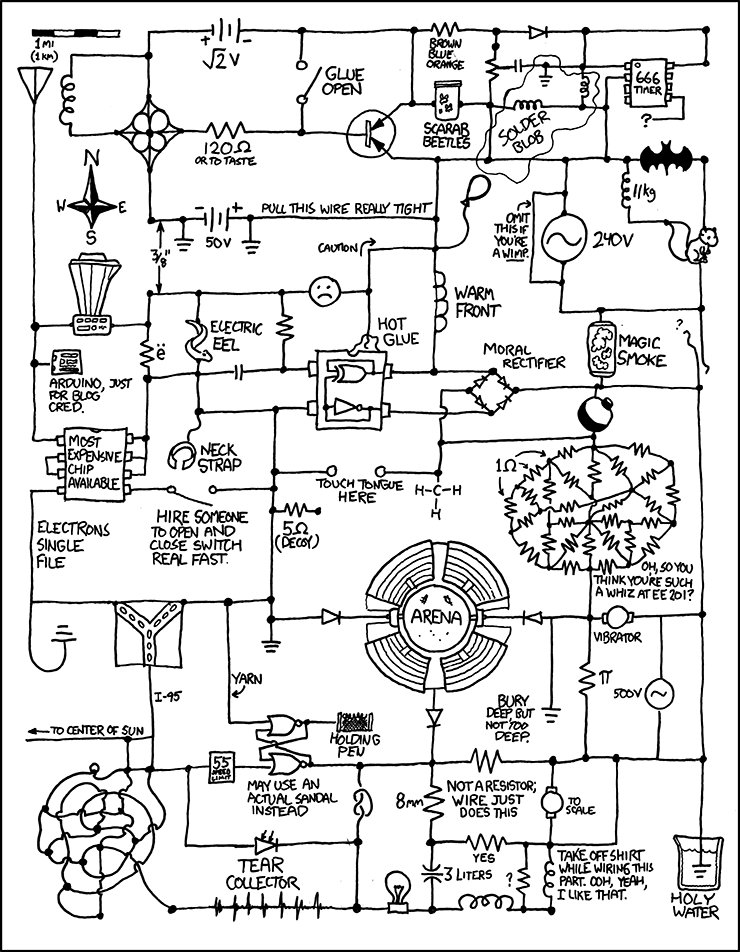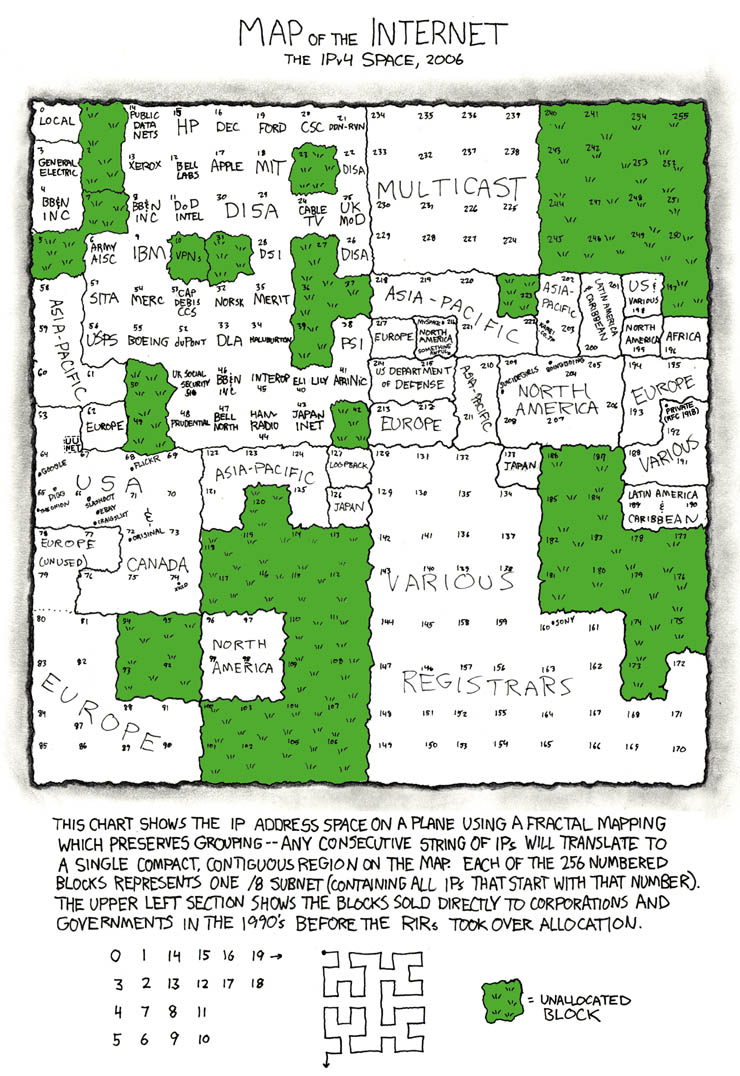Tuesday, December 24, 2013
Two People at the University of Oklahoma that Impress Me
Dr. Henry Neeman:
I have been to a few of his workshops for Supercomputing in Plain English. He is very knowledgeable about what sort of performance programs will give you based on the choices that you make. I believe in the future I will need to look more at this sort of stuff if I want something to work.
A link:
http://www.oscer.ou.edu/education.php
Dr. Chris Weaver:
I believe his research is very relevant to the current research trends of dealing with Big Data and even for structured data such as the Semantic Web. He developed software called Improvise that makes it easier for the lay user to approach data. I believe it is well thought out.
Two links:
http://www.cs.ou.edu/~weaver/academic/research.html
http://www.cs.ou.edu/~weaver/improvise/index.html
Saturday, June 15, 2013
Books from the Library (6/15/2013)
Sheppard, Sheri D. et al., Educating Engineers, Jossey-Bass, San Francisco, CA, 2009
Rasmusen, Eric, Games and Information: An Introduction to Game Theory, 4th Ed., Blackwell Publishing, Malden, MA, 2007
Fuller, R. Buckminster, Critical Path, St. Martin's Press, New York, NY, 1981
Gero, J.S. Ed., Knowledge Engineering and Computer Aided Design, IFIP, Elseiver, Amesterdam, 1985
Gardner, Dan, Future Babble: Why Expert Predictions Fail - And Why we Believe them Anyway, McClelland & Stewart, Toronto, ON, 2010
Bierman, A.K., The Philosophy of Urban Existence, Ohio University Press, 1973
George, Frank H., Science and the Crisis in Society, John Wiley & Sons Ltd, London, 1970
Seto, William W., Schaum's Outline Series, Theory and Problems of Mechanical Vibrations, The Schaum Publishing Company, New York, NY, 1964
Rasmusen, Eric, Games and Information: An Introduction to Game Theory, 4th Ed., Blackwell Publishing, Malden, MA, 2007
Fuller, R. Buckminster, Critical Path, St. Martin's Press, New York, NY, 1981
Gero, J.S. Ed., Knowledge Engineering and Computer Aided Design, IFIP, Elseiver, Amesterdam, 1985
Gardner, Dan, Future Babble: Why Expert Predictions Fail - And Why we Believe them Anyway, McClelland & Stewart, Toronto, ON, 2010
Bierman, A.K., The Philosophy of Urban Existence, Ohio University Press, 1973
George, Frank H., Science and the Crisis in Society, John Wiley & Sons Ltd, London, 1970
Seto, William W., Schaum's Outline Series, Theory and Problems of Mechanical Vibrations, The Schaum Publishing Company, New York, NY, 1964
Friday, June 7, 2013
Yes! I did some toilet Research.
Here is the MIT version:
http://web.mit.edu/2.972/www/reports/toilet/toilet.html
On the MIT site I learned about siphoning into a cesspool or sewer, yet I still wondered about the vortex. Fortunately, speedball1 at askmehelpdek.com gives an answer: (http://www.askmehelpdesk.com/plumbing/toilet-swirl-but-no-vortex-265131.html). It's all about a small hole at the bottom of the bowl. However, that was not enough.
Here is a patent that gives some more information (I was still wondering about the vortex):
http://www.google.com/patents/US5651148
http://web.mit.edu/2.972/www/reports/toilet/toilet.html
On the MIT site I learned about siphoning into a cesspool or sewer, yet I still wondered about the vortex. Fortunately, speedball1 at askmehelpdek.com gives an answer: (http://www.askmehelpdesk.com/plumbing/toilet-swirl-but-no-vortex-265131.html). It's all about a small hole at the bottom of the bowl. However, that was not enough.
Here is a patent that gives some more information (I was still wondering about the vortex):
http://www.google.com/patents/US5651148
Thursday, June 6, 2013
I'm Learning XML
I'm very happy that I decided to learn more about XML. Derek Banas gives some excellent video tutorials.
Learn XML Tutorial:
https://www.youtube.com/watch?v=qgZVAznwX38&list=PLkuLr_86f9iLO6lDG571ylBC7IIPCPhOj
XML Video Tutorial:
https://www.youtube.com/watch?v=tAN-1xUsftg&list=PLYV0SUi2LqaJx3VtLptEVLMGFvBgExlXM
Happily, XML is also used with the Desktop Menus in GNOME:
https://developer.gnome.org/integration-guide/stable/desktop-files.html.en
http://standards.freedesktop.org/menu-spec/latest/index.html
Why am I happy? Well, I installed Eclipse JUNO to do the XML Video Tutorials and I wanted a shortcut to Eclipse. In the process, I got a project that uses XML for free.
Learn XML Tutorial:
https://www.youtube.com/watch?v=qgZVAznwX38&list=PLkuLr_86f9iLO6lDG571ylBC7IIPCPhOj
XML Video Tutorial:
https://www.youtube.com/watch?v=tAN-1xUsftg&list=PLYV0SUi2LqaJx3VtLptEVLMGFvBgExlXM
Happily, XML is also used with the Desktop Menus in GNOME:
https://developer.gnome.org/integration-guide/stable/desktop-files.html.en
http://standards.freedesktop.org/menu-spec/latest/index.html
Why am I happy? Well, I installed Eclipse JUNO to do the XML Video Tutorials and I wanted a shortcut to Eclipse. In the process, I got a project that uses XML for free.
Saturday, May 11, 2013
Riak
I stumbled across Riak while searching for an error in the Node.js debugger. Apparently it uses Link Walking. This is interesting because it looks like Linked Data, but I'm not sure it is. Maybe it is. But it isn't a graph database like Neo4j. Does it have to be?
See comparisons: http://docs.basho.com/riak/latest/references/appendices/comparisons/
Interestingly, they also linked to Web Linking: http://tools.ietf.org/html/draft-nottingham-http-link-header-10
See comparisons: http://docs.basho.com/riak/latest/references/appendices/comparisons/
Interestingly, they also linked to Web Linking: http://tools.ietf.org/html/draft-nottingham-http-link-header-10
Sunday, May 5, 2013
Node.js Book
Yes! I found TJ's Mastering Node book when looking for How to exit in Node.JS. It looks pretty good, so I am bookmarking it in my blog. Also see the official site at nodejs.org.
Thursday, March 14, 2013
Books from the Library - 3-14-2013
Ed. Elliot R. Robinson and James M. Harvey, The Engineering Uses of Holography, Cambridge University Press, 1970
Joel Scambray, Mike Shema, and Caleb Shema, Hacking Web Applications Exposed, 2nd Ed., Mc-Graw Hill
Tuesday, March 5, 2013
Books from the Library (March 5, 2013)
Barrie Sandusky, Networking Bible, Wiley, 2009 (idea: read this to fit in with network security people)
Peter Seibel, Coders a Work : Reflectons on the Craft of Programming, Apress, 2009 (idea: read this to find out what you don't know)
Susan Wise Baker, The Well - Educated Mind : A Guide ot the Classical Education You Never Had, W.W. Norton and Company, New York, NY, 2003
(idea: read this for better discussions)
Friday, February 1, 2013
This is really sad
I was looking at the Maxima manual, and I had a "I wonder what this does" moment. It had to deal with Hilbert Maps, which may be found on Sourceforge at: http://maxima.sourceforge.net/docs/manual/en/maxima_54.html#SEC268.
After I put in the two commands:
(%i1) load(fractals)$
(%i2) plot2d([discrete,hilbertmap(6)])$
into xMaxima I obtained this: I was still not satisfied, so I did a quick Google search for Hilbert Maps. I clicked on one of the resulting images, and wound up here: http://www.team-cymru.org/Monitoring/Malevolence/maps.html. This was all nice and good, but I wanted to know what Wikipedia said as well (http://en.wikipedia.org/wiki/Hilbert_curve).This also led me to R-trees (http://en.wikipedia.org/wiki/R-tree) which remind me of network visualization, and Gray Codes which make me think of Minecraft. I performed a Google search for Hilbert Maps + Minecraft, and then a search for Minecraft + Gray Codes. This Youtube video by Neumann Gregor was an interesting result (http://www.youtube.com/watch?v=Y4ebK-qvAlk). Team Cymru also led me to xkcd, where I found a wonderful circuit diagram:
I was still not satisfied, so I did a quick Google search for Hilbert Maps. I clicked on one of the resulting images, and wound up here: http://www.team-cymru.org/Monitoring/Malevolence/maps.html. This was all nice and good, but I wanted to know what Wikipedia said as well (http://en.wikipedia.org/wiki/Hilbert_curve).This also led me to R-trees (http://en.wikipedia.org/wiki/R-tree) which remind me of network visualization, and Gray Codes which make me think of Minecraft. I performed a Google search for Hilbert Maps + Minecraft, and then a search for Minecraft + Gray Codes. This Youtube video by Neumann Gregor was an interesting result (http://www.youtube.com/watch?v=Y4ebK-qvAlk). Team Cymru also led me to xkcd, where I found a wonderful circuit diagram:
 as well as a map of the IP4 space of the Internet:
as well as a map of the IP4 space of the Internet:
 Team Cymru was great because they also linked to The Measurement Factory at http://www.measurement-factory.com/.
While there, I was interested in what CAIDA was. From the link (http://www.caida.org/home/), it turns out they are all about Internet Data Analysis.
Team Cymru was great because they also linked to The Measurement Factory at http://www.measurement-factory.com/.
While there, I was interested in what CAIDA was. From the link (http://www.caida.org/home/), it turns out they are all about Internet Data Analysis.
 I was still not satisfied, so I did a quick Google search for Hilbert Maps. I clicked on one of the resulting images, and wound up here: http://www.team-cymru.org/Monitoring/Malevolence/maps.html. This was all nice and good, but I wanted to know what Wikipedia said as well (http://en.wikipedia.org/wiki/Hilbert_curve).This also led me to R-trees (http://en.wikipedia.org/wiki/R-tree) which remind me of network visualization, and Gray Codes which make me think of Minecraft. I performed a Google search for Hilbert Maps + Minecraft, and then a search for Minecraft + Gray Codes. This Youtube video by Neumann Gregor was an interesting result (http://www.youtube.com/watch?v=Y4ebK-qvAlk). Team Cymru also led me to xkcd, where I found a wonderful circuit diagram:
I was still not satisfied, so I did a quick Google search for Hilbert Maps. I clicked on one of the resulting images, and wound up here: http://www.team-cymru.org/Monitoring/Malevolence/maps.html. This was all nice and good, but I wanted to know what Wikipedia said as well (http://en.wikipedia.org/wiki/Hilbert_curve).This also led me to R-trees (http://en.wikipedia.org/wiki/R-tree) which remind me of network visualization, and Gray Codes which make me think of Minecraft. I performed a Google search for Hilbert Maps + Minecraft, and then a search for Minecraft + Gray Codes. This Youtube video by Neumann Gregor was an interesting result (http://www.youtube.com/watch?v=Y4ebK-qvAlk). Team Cymru also led me to xkcd, where I found a wonderful circuit diagram:
 as well as a map of the IP4 space of the Internet:
as well as a map of the IP4 space of the Internet:
 Team Cymru was great because they also linked to The Measurement Factory at http://www.measurement-factory.com/.
While there, I was interested in what CAIDA was. From the link (http://www.caida.org/home/), it turns out they are all about Internet Data Analysis.
Team Cymru was great because they also linked to The Measurement Factory at http://www.measurement-factory.com/.
While there, I was interested in what CAIDA was. From the link (http://www.caida.org/home/), it turns out they are all about Internet Data Analysis.
Subscribe to:
Posts (Atom)